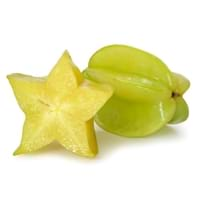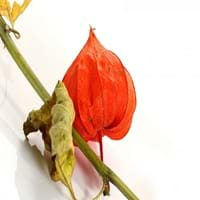Health Benefits
Cancer prevention, Heat stroke treatment
Anti-oxidant properties, Anti-inflammatory properties, Cancer prevention, Maintains healthy cholesterol level, Reduces blood circulation problems, Treatment of cough, fever & sore throat, Treatment of Hypertension
General Benefits
Anti oxidant properties, Anti-inflammatory properties, Digestive aid, Maintains healthy cholesterol level, Treatment of sore eyes
Treatment of asthma, Treatment of cataract, Treatment of hepatitis, Treatment of macular degeneration, Treatment of neurodegenerative diseases
Skin Benefits
Anti-aging benefits, Heals sunburn, Skin rejuvenation
Treatment of Rheumatism & Dermatitis, Treatment of Skin Inflammation
Hair Benefits
Promotes longer and healthier hair, Protects hair
Unknown
Side Effects
Nausea, Vomiting
Hypertension, Ventricular Tachycardia
Best Time to Eat
As a snack in the late afternoon, Eat the fresh ones, avoid mixing with any other foods, don't eat after meal., Strictly avoid empty stomach
As a snack in the late afternoon, Eat the fresh ones, avoid mixing with any other foods, don't eat after meal., Morning time (before lunch), Strictly avoid empty stomach
Vitamin B5 (Pantothenic Acid)
Not Available
Vitamin B6 (Pyridoxin)
Not Available
Vitamin B9 (Folic acid)
Not Available
Vitamin C (Ascorbic Acid)
Vitamin K (Phyllochinone)
Not Available
Lutein+Zeaxanthin
Not Available
Water Content
Not Available
Calories in Fresh Fruit with Peel
Calories in Fresh Fruit without Peel
Not Available
Not Available
Calories in Frozen Form
Not Available
Not Available
Calories in Dried Form
Not Available
Calories in Canned Form
Not Available
Not Available
Calories in Jam
Not Available
Calories in Pie
Not Available
Type
Tree fruit
Fruit vegetable
Season
Autumn, Spring, Summer
Spring, Summer
Varieties
King, Bell, Sri Kembangan, Arkin and Fwang Tung
Physalis franchetii, Physalis pruinosa, Physalis peruviana, Physalis heterophylla and Physalis philadelphica
Color
Golden yellow, Green
Bright Yellow, Orange
Inside Color
Yellowish Green
Orange
Shape
Oval and Star(Cross section)
Round
Taste
Crisp, Juicy, Sweet
NA
Origin
Sri Lanka
Chile, Peru
Grows on
Not Available
Bushes
Soil Type
Loam, Well-drained
NA
Climatic Conditions
Moist, Warm to hot climate
NA
Facts about
- When carambola is cut horizontally, it forms a star.
- It is believed that carambola helps to cure hangover.
- Entire carambola is edible, including its skin.
- 2 varieties of carambola are cultivated: tart & sweet.
NA
Other Countries
Australia, Guyana, India, Israel, Malaysia, Philippines, United States of America
NA
Top Importer
Europe
Netherlands
Top Exporter
Malaysia
Colombia
Botanical Name
Averrhoa carambola
Physalis Peruviana
Synonym
Not Available
Alkekengi, Herschellia & Pentaphitrum
Subkingdom
Tracheobionta
Tracheobionta
Division
Magnoliophyta
Magnoliophyta
Class
Magnoliopsida
Magnoliopsida
Subclass
Rosidae
Asteridae
Order
Oxalidales
Solanales
Family
Oxalidaceae
Solanaceae
Species
A. carambola
Physalis
Generic Group
Not Available
Not Available
Difference Between Carambola and Physalis
We might think that Carambola and Physalis are similar with respect to nutritional value and health benefits. But the nutrient content of both fruits is different. Carambola and Physalis Facts such as their taste, shape, color, and size are also distinct. The difference between Carambola and Physalis is explained here.
The amount of calories in 100 gm of fresh Carambola and Physalis with peel is 31.00 kcal and 77.00 kcal and the amount of calories without peel is Not Available and Not Available respectively. Thus, Carambola and Physalis belong to and category.These fruits might or might not differ with respect to their scientific classification. The order of Carambola and Physalis is Oxalidales and Solanales respectively. Carambola belongs to Oxalidaceae family and Physalis belongs to Solanaceae family. Carambola belongs to Averrhoa genus of A. carambola species and Physalis belongs to Physalis genus of Physalis species. Beings plants, both fruits belong to Plantae Kingdom.









